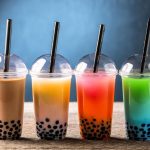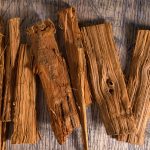
02 Jun Teas vs Tisanes: Key Differences, Types, and How to Prepare Them
Manuel Tiago has been at the helm of Chás do Mundo for 18 years, a shop in Leiria offering over 2000 varieties of tea.
“Before dedicating myself exclusively to tea, I ran a restaurant where I sold loose teas. I decided to specialise in tea because it was distinctive.” He comes to the Agora Nós show to talk about curiosities of the tea world: how it’s prepared, which types are most sought after, and what distinguishes them from herbal infusions.
Tea or Herbal Infusion?
This is a common question. According to Manuel Tiago, “For a beverage to be called tea, it must contain leaves from the ‘Camellia sinensis’ plant.” Examples include green tea, black tea, white tea, etc.
All other infusions made from fruits, herbs, or peels that do not contain ‘Camellia sinensis’ are herbal infusions (or tisanes). For example, “chamomile tea”, “linden tea”, and “lemon balm tea” are actually herbal infusions, not tea.
All Teas Come from the Same Plant
All teas (Camellia sinensis) come from the same plant. Whether it is green, black, or white tea depends on the drying process of the leaves. However, not all types of tea are harvested at the same time. Oolong and Pu Erh teas, for instance, go through a drying and fermentation process.
Do Teas Contain Caffeine?
There are decaffeinated teas (Camellia sinensis), just as there is decaffeinated coffee. However, if the terms “decaffeinated” or “décaféiné” are not included in the tea’s description, all teas contain caffeine. Generally, the darker the tea, the higher its caffeine content. If you prefer a hot or cold beverage without any caffeine, suitable for all ages, opt for herbal infusions (being careful to avoid stimulating plants like yerba mate). Rooibos infusions are also an excellent alternative.
Rooibos, for Example, is Not Tea, it’s an Herbal Infusion
Rooibos is an herbal infusion from a South African plant (Aspalathus linearis) unrelated to the tea plant (Camellia sinensis). This infusion has no caffeine and is an excellent antioxidant, commonly used in weight loss regimens. Due to its colour, it is also known as red tea, though it should not be confused with Pu Erh red tea, which comes from the Camellia sinensis plant.
Matcha tea is considered a superfood. Matcha is made from the youngest green tea leaves, which come from shaded plantations. After harvesting, the leaves are slowly ground into a powder using a stone mill. This powder is more concentrated than other teas from the Camellia sinensis plant, which means it can produce quicker results. Besides aiding in weight loss, matcha has other positive effects on the body, such as lowering cholesterol levels and preventing cancer.
Preparing Teas and Herbal Infusions
Teas and herbal infusions are not prepared in the same way. Each type should respect two criteria: water temperature and infusion time.
There are 3 main preparation methods:
- Infusion: Pour hot water over the plant and let it steep. The steeping time depends on the type of plant or fruit used. This is the traditional method for preparing teas and herbal infusions. The term “infusion” can also refer to herbal infusions (like chamomile), fruit infusions (like lemon peels), and green tea.
- Decoction: This method is used for roots, bark, and stems. It involves placing the ingredient in cold water, bringing it to a boil, and letting it simmer for 3 to 10 minutes. The container should be covered while cooling.
- Maceration: This method is typically used for making liqueurs and syrups. It involves combining chopped and crushed plants with a liquid solution (water, alcohol, oil, etc., depending on the desired outcome). This process can take from 12 hours to several days.
How to Store Tea
All plants used in infusions should be kept away from heat, drastic temperature changes, and strong odors. Store the plants in airtight containers in a cool, dry place, away from direct sunlight.
Come and visit us!








Sorry, the comment form is closed at this time.